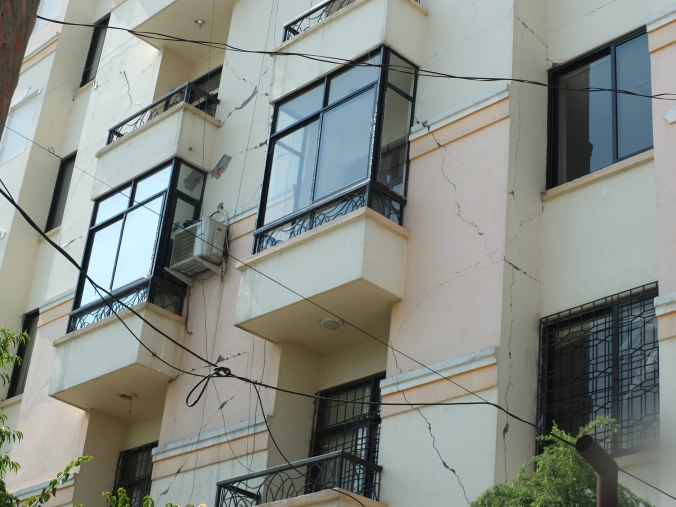Its not often that you see a city take shape before your eyes. Manila was that way, with giant skyscrapers flying up seemingly overnight. By contrast, Kathmandu builders took years to put up a couple of much smaller multi-story buildings in our neighbourhood. Since the earthquake, the Nepali government stopped the construction of high-rise buildings in Kathmandu. A significant number received a yellow or red card from earthquake damage and the skills and technology needed to implode them are absent along with any conviction to uphold seismic code regulations. What Kathmandu excels in is the construction of two and three story apartment buildings on what was used to be rice paddies. They fly up in the blink of an eye. There’s no seismic code implementation there either, but luckily many did survive the tremors.
Many older buildings didn’t, especially in the Narayan Chaur/ Nag Pokahari area which was walking distance from our home. Before the quake, the neighborhood was a typical mixture of old and new, but it felt poised to grow, gentrify even. Recent community efforts to upgrade communal spaces with simple outdoor activities and “beautification” efforts continued long after the recent SAARC efforts to spruce up the city. Narayan Chaur, an oval-shaped piece of open land in Naxal, was largely a waste ground and dumping site when we first arrived in Kathmandu. With what in retrospect was surprising foresight, the community police in Naxal developed the barren land into a park and possible rescue point in times of natural calamity. The land was fenced off and a footpath laid out around the perimeter. For a while it turned into a favourite exercise spot for early morning joggers. Clearly, the value to the community was enormous in a city with no parks. Its was a roaring success.
After the quake, Narayan Chaur, quickly became a tent city. I spent about six hours there immediately after the earthquake, sheltering in one of the few, relatively safe open spaces, as the after tremors kept coming and coming. I finally left to walk home, but others are still living there now, almost three months later.
Nearby so many old buildings were destroyed. Some were ready to fall anyway, others just ramshackle from years of neglect. I could already see that it was just a matter of time before the old buildings were demolished to be replaced by new, but the hope persisted that perhaps they would survive long enough for someone to come save them. But the earthquake took care of them in its own way, and now there’s little evidence they even existed.

Before the quake, the ramshackle temple at Nag Pokhari housed a school also. Its almost dilapidated buildings showed wonderful traditional architecture and carving.














